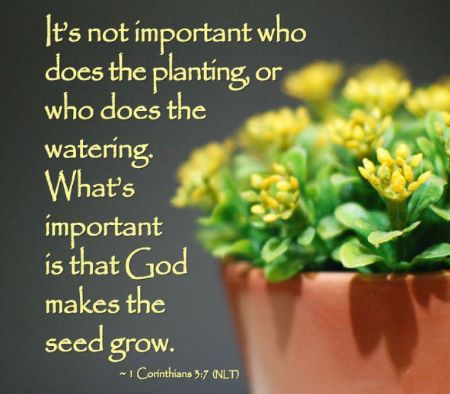
Seeing Fully
I was a late bloomer. Although it seemed at first that I was going to be a fast starter since I was born two months too soon, it took me a while to catch up. I started kindergarten a month before I turned five (when you were supposed to already be five) but needed some help from a speech pathologist. I had trouble sitting still, and my first-grade teacher’s report card comments reflected that. I didn’t go right from high school to college (but worked for two years in between); and I changed my major twice (first speech pathology, then elementary education, and finally comparative religion.) I came from Judaism to Christianity at thirty-seven. But I didn’t come out until I was forty-five (after being married for seventeen years.) And I didn’t begin seminary until I was fifty-three (thirty years after earning my bachelor’s degree.) In many things, I was an introverted observer. And while I stood on some sidelines, learned something about seeing patterns.
And one of the things I think I’ve learned, is that we humans can tend to project our own experiences onto others. That we can not only conclude that the experiences we have growing up (while we are being formed) are “normal,” but we can make them normative (determinative) for others. For example, let’s say a child is raised by parents who never read them bedtime stories; they may, when they become parents, be caught off-guard that other parents they know would even do this. And in my own childhood experience, ketchup on hamburgers, and mustard on hot dogs was not only normal, but right (determinative) for others too.
There are also patterns which periodically repeat, even though their content may express some variation. Take the winter and summer solstices for example. On December 21 it may snow 6″ one year, and the next year the ground may be clear. And on June 21 it may be 71° one year and 91° the next. Reliable patterns with variable content.
This month marks the end of my eleventh full-year serving Holy Cross and Ascension; and the end of my first full-year serving Holy Trinity. Eleven years ago I served two congregations in two locations. Then in 2014, I served two congregations in one location. And now I’m serving three congregations in two locations. And within this configuration, there are patterns which periodically repeat even though their content may express some variation. At both 9:00 and 11:00, we Gather, hear God’s Word, are fed at Table, and are Sent to do God’s work. We confess our sins and are absolved.
But the music at Two Churches and at Holy Trinity is different. After several years, we omitted the filioque from the Nicene Creed at Two Churches based on a General Convention commitment to do so; while it’s contained in [ brackets ] at Holy Trinity as we move closer to that practice there. Organ or piano at Two Churches, and piano and / or guitar at Holy Trinity. Bulletin cover images at both locations, but different images. Reliable patterns with variable content.
Many of us “read, learn, and inwardly digest” the world through the lenses of our own experiences. But in 1 Corinthians 13:9-12, Paul wrote: For we know only in part, and we prophesy only in part; but when the complete comes, the partial will come to an end. When I was a child, I spoke like a child, I thought like a child, I reasoned like a child; when I became an adult, I put an end to childish ways. For now we see in a mirror, dimly, but then we will see face to face. Now I know only in part; then I will know fully.
Most people with color blindness, grow up with a vague intellectual understanding that they don’t see colors the way most other people see them. And with some guidance from those with full color vision, they can come to understand that what they see as pale yellow is really red, and that what they see as blue is really purple.
When my daughter was about six years old, she was looking at some photos of her mom when her mom was about ten. Her mother was standing inside an empty built-in swimming pool, peering up over the edge, wearing sunglasses, and looking at the camera, all in glorious black and white. And Rachel paused for a moment –– you could tell she was thinking deeply –– and she turned toward her mom and said “Mommy, when you were little, before there was color…”
Before there was color. When we were in the Kansas part of The Wizard of Oz, and not yet in the rich technicolor golden yellows and kelly greens of Oz itself. But Rachel was only thinking about what she knew; only questioning what was in her experience. Her world was one of color. She had seen color photos; and photos that she knew were older were in black and white. So obviously, at some point there was only black and white, and then something happened and there was color, right?
But can you imagine how it must be for some people to not see color? How not seeing all colors must diminish one’s experience without even knowing that their experience has been diminished? Those with color deficiency may have an intellectual understanding about their lived lack; but until they put on a pair of EnChroma glasses (which correct this deficiency), they have no point of reference from which to experience it.
This “face to face seeing” to which Paul refers would be like giving EnChroma glasses to an adult who’s lived their lives with color deficiency. Except for us, it will be to see clearly and know God’s radical grace, unmerited forgiveness, and boundless love. And to live our lives out of that reality. For now though, we’ll have to believe the enlightened ones who assure us that it is so; and know that in God’s time, we will all bloom and see fully.








